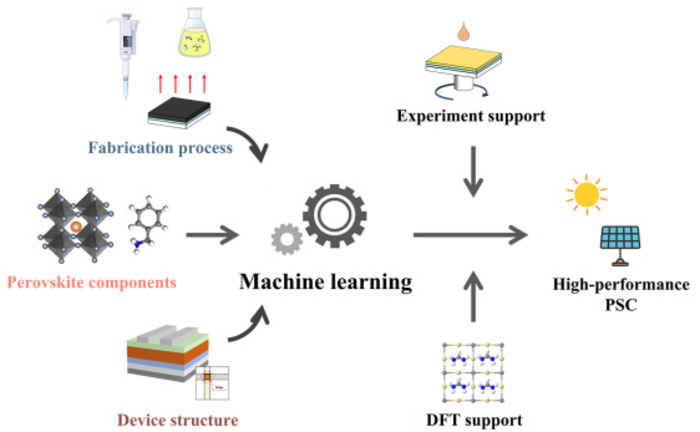In the past few years, metal halide perovskite solar cells (PSCs) have been quickly developed. To achieve high-performance PSCs, improving the fabrication processes and composition of the perovskite films is vital.
 Screening the fabrication process parameters for perovskite solar cells by machine learning. Image Credit: Journal of Energy Chemistry.
Screening the fabrication process parameters for perovskite solar cells by machine learning. Image Credit: Journal of Energy Chemistry.
Extensive work has been performed to identify the effects of the fabrication processes and composition of the perovskite films on the performance of the device. But it has been difficult to clarify their correlations due to the immense variable space built by such factors.
Certainly, exploring these relations is vital to forecast device performance for effective device optimization. But as a result of the complexity of these factors, it has been not possible so far to execute this work only via experimentation.
In recent times, Professor Zheng Xu and Associate Professor Dandan Song of Beijing Jiaotong University approved the machine learning (ML) method to examine such correlations by learning the present experimental outcomes, thereby allowing the prediction of the device performance from such factors.
The effects of such factors on the device performance were examined by shapley additive explanations (SHAP) analysis. Moreover, to enhance the interpretability of the ML model, the authors took A-site cations into account as an instance to describe and confirm the predicted outcomes by density functional theory (DFT) calculations and experiments.
This study performed thoroughly clarifies how ML guides device optimization, thereby also acting as a guide for the reverse design of experiments for high-performance PSCs to be achieved.
Journal Reference:
Lu, Y. et al. (2022) Predicting the device performance of the perovskite solar cells from the experimental parameters through machine learning of existing experimental results. Journal of Energy Chemistry. doi.org/10.1016/j.jechem.2022.10.024.